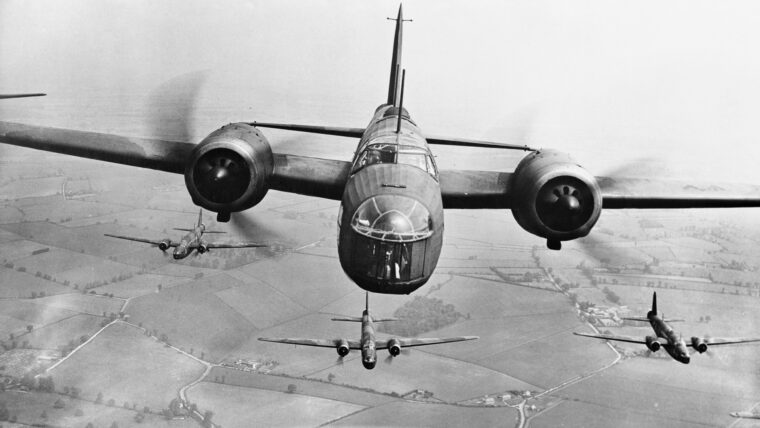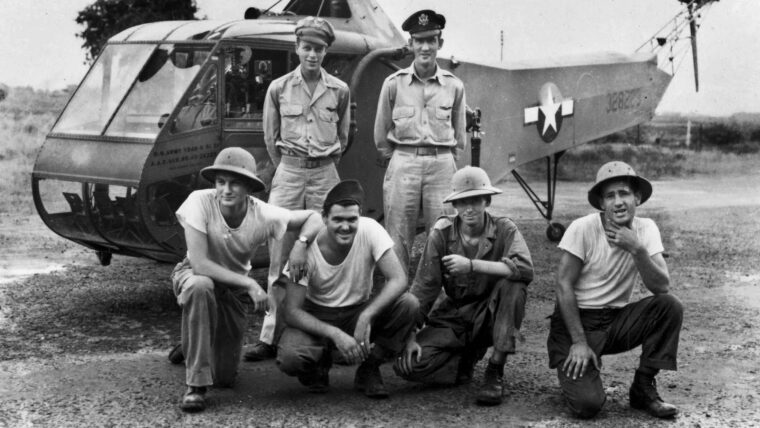
The Heroic Death of the HMS Jervis Bay
By Chuck LyonsAble Seaman John Jeffcott, 27, of the HMS Jervis Bay was apprehensive in October 1940 as his ship sailed from Hailfax, Nova Scotia. Read more

Able Seaman John Jeffcott, 27, of the HMS Jervis Bay was apprehensive in October 1940 as his ship sailed from Hailfax, Nova Scotia. Read more

Ask anyone who was there and they will tell you that Papua New Guinea, especially along the northern coast, was a tropical hell. Read more

Edward Henry “Butch” O’Hare rocketed to fame in February 1942 by singlehandedly taking on eight Japanese torpedo bombers bent on destroying the aircraft carrier USS Lexington and shooting down several of them. Read more

Smolensk Russia, Headquarters, German Army Group Center (AGC), December 3, 1941; Army Group commander, 61-year-old Generalfeldmarschall Fedor von Bock is a troubled man. Read more

“We were to be terrorists. Our job was to terrorize the Germans,” one former member said dramatically. Read more

The attack was beginning despite the widespread lack of artillery support, engineers, or armor. Normally this would be a recipe for disaster. Read more

Sergeant William R. Kelly crashed through the treetops, slamming to a stop when his parachute canopy caught on some branches. Read more

A casual observer of World War II photographs after 1943 will often notice slouch hat- or beret-wearing Australian “diggers,” or armed Melanesian natives in the Australian Constabulary battalions, slogging through the muck and jungle of New Guinea, Bougainville, New Britain, and Borneo carrying a rather odd-looking weapon with a vertical top-mounting magazine. Read more

Shellfire rocked the aid station. A ceiling beam cracked, raining down plaster. One explosion obliterated a window, hurling stone, wood, and glass shards into the room. Read more

Amid rain, lightning, and dark, the British admiral and American general picked their way through choppy seas to the transport USS McCawley, off the coast of Guadalcanal. Read more

Lucian Truscott needed a cigarette. The 47-year-old brigadier general was having the worst night of his life. Read more

Activity at Japanese air bases in the northern Solomon Islands reached a fever pitch as the South Pacific sun rose on the morning of April 7, 1943. Read more

As one island or island group in the Pacific was fought over by American and Japanese forces, it became clear that Japan’s days as a combatant in World War II were numbered. Read more

In 1960 Twentieth Century Fox released the film Sink the Bismarck! Based on C.S. Forrester’s bestselling book The Last Nine Days of the Bismarck, the documentary-style film tells a gripping and reasonably factual account of the most famous sea chase in history. Read more

By the time the attack on Pearl Harbor plunged the United States into World War II, Japan had been preparing for an all-out offensive in the Pacific for months. Read more

Alan George was born in 1918 and was fourth-generation New Zealander. His great grandparents arrived in New Plymouth in 1841 from Cornwall, England, aboard the 506-ton ship Oriental. Read more

On September 14, 1939, Igor Sikorsky attained stability and control with the initial flight of an open cockpit test bed known as the VS-300. Read more

On December 1, 1942, Lance Corporal Kiyoshi Koto wrote his last letter home. By that time, his unit’s command structure was decimated and the battle strength of his army and its supporting navy was ravaged. Read more

Former German President Horst Koehler once said that Auschwitz, the largest Nazi extermination camp, was home to the “worst crime in human history.” Read more

Of all the landmarks in Europe, few are as distinctive and instantly recognizable as the medieval fortress/ monastery of Mont Saint Michel, located on the French coast seven miles southwest of the city of Avranches. Read more